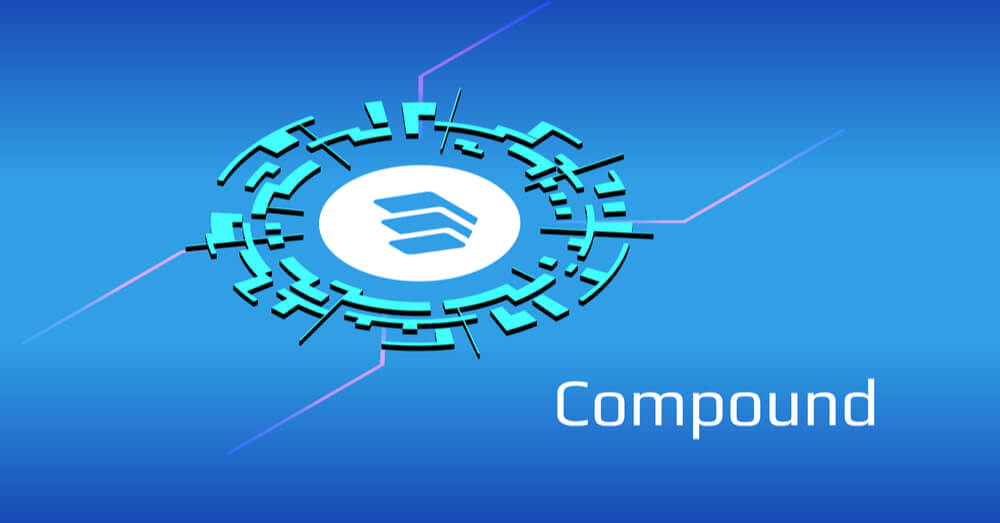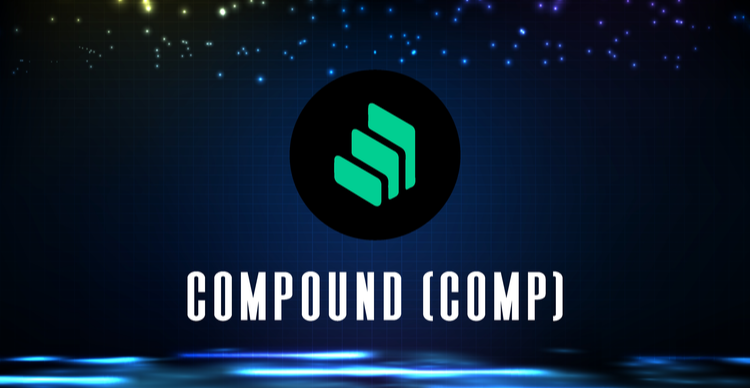What is Compound & How Does it Work? - COMP for Beginners
Launched in 2018, Compound is one of the leading DeFi platforms that allows people to borrow and lend crypto assets, much like one would through a bank, but without the need of an intermediary. This has resulted in higher yields for lenders and an overall lower interest rate for asset borrowers.
The brainchild of Robert Leshner and Geoffrey Hayes, the Compound protocol has a native token called COMP. Holders of the token can earn interest by lending the tokens (or borrow by using Compound tokens as collateral) and also exercise the voting rights associated with COMP.
Why Was Compound Invented?
Initially, the Compound protocol did not have any native tokens. Users who deposited their assets in the lending pools were given LP (Liquidity Provider) cTokens, which simply represented their stake in the pools and allowed the protocol to deposit the earnings in wallets where the cTokens were held.
However, Leshner and Hayes had more plans than just running a simple lending DeFi platform. The control was centralised in their hands and in order to make it truly decentralised, they created the COMP token in April 2020. The token holders were granted the right to propose changes and new services. These proposals are then put to a vote by the community. If enough backing is given, the proposal is implemented.
In this way, Compound tokens offer total control of the platform to the users and will help the protocol to become a Decentralised Autonomous Organisation (DAO).
How Does Compound Work and What Technology is Behind It?
Compound is an ERC20 compliant token. As such, it uses the Ethereum blockchain ecosystem as its backbone. Compound connects individual lenders and borrowers, allowing them to transact trustlessly using the blockchain. This results in lenders earning high-interest rates on their deposits, and borrowers getting cheaper and more accessible loans.
As a decentralised asset, COMP tokens can be sent and received between parties through peer-to-peer networks. Unlike traditional finance where people must rely on middlemen such as banks and money transmitters, blockchain has no such intermediaries. All transactions are recorded in blocks and noted down by miners, who require a small fee for their efforts.
This direct transfer of Compound tokens means there is no central authority involved, and leveraging the power of Ethereum, there are thousands of miners who note down the transactions in their copies of ledgers, making the possibility of an invalid transaction near to impossible (as a single miner’s transaction would not match up with others). This makes cryptocurrencies like COMP extremely secure.
Taking a step further, the Compound developers have given COMP holders the right to decide their own fate. As a DAO, it again leverages the power of blockchain to allow people to vote on different proposals, which are only implemented if the ledger records enough votes.
Is Compound Real Money?
Robert Leshner and Geoffrey Hayes, the developers behind Compound, have not declared the COMP tokens as a currency of any sort, but it is used primarily as a governance token. This means that the primary use of Compound coins is to allow holders to decide upon the changes or upgrades to the protocol, much like shareholders of a corporation.
On the other hand, Compound tokens are available freely in the market and can be purchased. The better security, faster payment time, and lower fees than fiat currencies make COMP an excellent payment alternative. As such it does serve a replacement for traditional money (though central banks often contradict it on the basis of technicality).
Compound has another trick up its sleeve. Other cryptocurrencies such as bitcoins and other governance tokens such as Yearn.Finance (YFI) have a maximum limit to the quantity that can be minted or mined. COMP similarly is limited to only 10 million in total. Slow issuance and a rising demand make the Compound token a deflationary asset in the long run and COMP holders have been able to increase their wealth. While fiats lose their value due to inflation, COMP moves in the opposite direction.
Fees and Expenses of Compound
Like any ERC20 standard token, COMP utilises the Ethereum ecosystem. This means that the token relies on Ethereum miners to record all transactions conducted, and as such, senders need to pay the Ethereum transaction fee (called GAS).
The fee is not a fixed value and changes, primarily due to the network load. Averaging around 10 to 15 transactions per second (TPS), there are only a limited number of transactions that can be verified. COMP senders have to not only compete with ETH, but thousands of other ERC20 (and other standards) tokens to have their transactions noted down in time. In high activity periods, the fee rises as people start paying more to have their transactions completed first.
As of the writing of this page, the average GAS cost of an ERC20 transaction is just a touch under $14.51. If you are going to interact with the Compound protocol, the price jumps a lot higher since the smart contracts are complex, requiring more movement than a normal ERC20 transfer would.
Thirdly, while you can save on transaction fees if you buy COMP tokens from a centralised platform, you will still end up paying a trading fee. Many platforms don’t charge you to fund your account with cryptocurrencies, but if you decide to move your Compound tokens out, it would be prudent to check if there are any withdrawal fees. Using fiat to fund your COMP purchase will also incur charges, specifically by your bank or card provider. Don’t forget to incorporate that in your calculations.
What Are the Benefits of Compound?
While COMP is not a security (and thus does not give any rights of ownership of the Compound protocol or any payouts such as dividends), it does offer a democratic control over the direction of the platform itself.
As a governance token, any COMP holder with a minimum of 65,000 delegated COMP can create a proposal (any changes in current offerings and operations, a fee alteration, or a new service) which is then put into a voting process and, if approved, is developed and executed. This governance mechanism gives COMP holders the ability to have control over their investments and wealth.
COMP also offers the ability to increase a holder’s wealth due to its deflationary nature. Only 10 million COMP can be created and with more than half already in circulation and limited issuance, as demand rises, the price is also increasing.
Can Compound Be Used Anonymously?
The answer depends on what you are doing with the COMP token. If you are using a completely decentralised exchange to interact with the tokens, you can remain anonymous. Sending and receiving directly from one wallet to another will only record information such as which wallets were involved and how much was transferred. Since blockchain wallets consist of a large string of alphanumeric characters as addresses, it is difficult to trace out the wallet owner.
Using a centralised platform to buy and sell or trade COMP is another story. You will eventually need to link your bank or card to the platform in order to use your fiat to buy COMP or sell the tokens and get money. This will establish a link between your COMP and you. Reputable platforms will have more information than just that, since their KYC and AML checks will include verification of your name, ID, and place of residence.
How Safe is Compound?
The use of complex algorithms makes it difficult to break into wallets and all transactions are validated through a consensus mechanism. As an ERC20 token, the security of COMP relies on Ethereum miners and with such a large collection of miners, it is nearly impossible for any fraudulent person to make a faulty transaction as the other miners would reject it.
Furthermore, the smart contract protocols of the Compound ecosystem have been audited by third parties to ensure there are no vulnerabilities that can be exploited.
What Teams Are Working On Compound Development?
Developed by Robert Leshner and Geoffrey Hayes, the Compound Protocol was initially controlled centrally by the creators. They were alone responsible for the development and implementation of different services and aspects of the whole ecosystem.
Hardly two years down the road, that changed with the DAO implementation. Now the community itself works on the different development aspects and through the voting process, implements it.
The Compound team continues to play its role in the development though. Apart from Leshner and Hayes who bring in their finance and technical experience respectively, the team comprises different software engineers who have worked on the technical side of major firms such as Nokia, Postmates, Coinbase Pro, and Consensys.
Which Financial Institutions are Invested in Compound?
As a protocol that allows people to instantly start earning through lending their idle assets and at the same time provide easy and low-interest loans to borrowers, Compound had garnered a lot of interest even before its launch and has several major financial institutions backing it:
-
Andreessen Horowitz:
Also known as a16z, the California based VC firm helps different tech companies to raise the necessary capital for their growth. From biotechnology to talents, Andreessen Horowitz has a vast portfolio. It took part in the Series A seed round of Compound.
-
Coinbase Ventures:
The investment arm of one of the largest crypto exchanges (Coinbase and Coinbase Pro), Coinbase Ventures works exclusively with crypto projects and leverages its vast user base to enable tokens to gain momentum through buying and trading.
-
Polychain
Another California based venture capital firm, Polychain is all about investing in different crypto and blockchain startups that show the potential to grow early on. At the same time, Polychain is a hedge fund and protects its investors’ money through a calculated investing method.
Compound Mining
COMP is a governance token and giving the ability to use computer power or another consensus method would lead to skewing the DAO concept as one large miner could essentially gain a substantial upper hand by collecting the COMP tokens.
In order to avoid all this, the Compound protocol’s COMP tokens are not mineable. While they were distributed initially to kick start the DAO process, today the only way to acquire newly issued COMP tokens is by taking part in the protocol. Lending or borrowing assets generates COMP coins which are distributed amongst the users (the distribution is based on the amount of asset share in the total pool). COMP can also be bought on exchange/broker platforms.
Compound Wallet
Since COMP is an ERC20 standard token, it can be stored in any compatible wallet. A few of the most used today are:
-
MetaMask
A web wallet, MetaMask is available as an extension on the most popular browsers and that makes it an excellent choice for DeFi platforms such as Compound where users can directly connect it to the available services.
-
Ledger Nano S
As a hardware device, the Nano S brings in superior security since it can be disconnected from the computer and essentially the Compound network.
-
MyEtherWallet
With both mobile and web versions, MyEtherWallet is a popular option and it also provides the option for an added security layer through 2FA.
-
Exodus
A multi-currency wallet with a built-in exchange option, Exodus is all about simplicity and practicality.
Is Compound Worth the Investment?
While the Compound token is a relative newcomer in the crypto sphere, its utility and the ability to earn passive income has propelled it to stand with the top coins in the market. It is in the top 60 coins on CoinGecko, beating out other well-established ones such as ZCash and Yearn.
Even with its increasing demand and rising value, if you are thinking about investing in Compound, we advise you to evaluate it carefully. COMP is a cryptocurrency after all, and these assets are notorious for their volatility. Only invest an amount you can afford to lose.
News

Compound lending platform adds Ethena’s USDe and Mantle’s mETH
9 January 2025 Compound has added USDe and mETH tokens to boost DeFi options Ethena’s USDe offers a high yield…
Superstate secures $14M Series A round co-led by CoinFund
15 November 2023 Superstate announced it raised $14 million in its Series A funding round. The round was co-led by…
VeChain, Toncoin, Compound, Maker prices rise as US CPI spikes
13 September 2023 Altcoins like Toncoin, Compound, Maker, and Hedera Hashgraph jumped on Wednesday. The US published strong consumer inflation…
Whale activity pushes COMP token price up by 50%
29 June 2023 Compound (COMP) was up 8% in the past 24 hours and 51% this past week. The gains…
Is selling now overdone for the Compound token?
29 November 2022 The Compound token has been stable after a bear market Prolonged crypto winter and liquidity issues facing…
